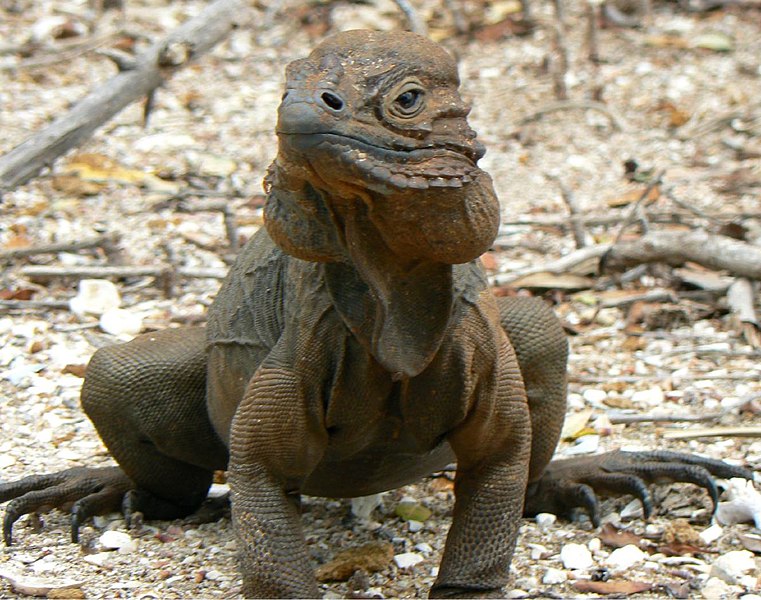 Rhinoceros Iguanas (Cyclura cornuta cornuta) rank among the most “personable” of the lizards I’ve worked with. However, due to their size, unique needs and powerful jaws (please see below), the decision to keep these magnificent animals must not be made lightly.
Rhinoceros Iguanas (Cyclura cornuta cornuta) rank among the most “personable” of the lizards I’ve worked with. However, due to their size, unique needs and powerful jaws (please see below), the decision to keep these magnificent animals must not be made lightly.
Description
The “bulldog-like” body is stoutly-built and colored uniform gray, brown, olive-brown or nearly-black. Rhinoceros Iguanas reach 4 feet in length, but appear larger due to their bulk.
The massive head of the male is topped by 3 horn-like tubercles and a thick adipose (fat) pad. The head and horns of females are smaller. Both sexes have large throat pouches and crests of pointed scales along the spine and tail. Read More »
 That Reptile Blog – Reptile, Amphibian and Exotic Pet Care and Information
That Reptile Blog – Reptile, Amphibian and Exotic Pet Care and Information


